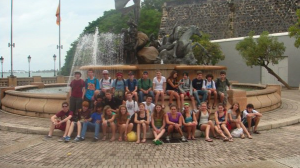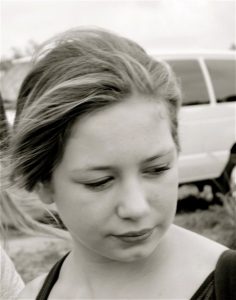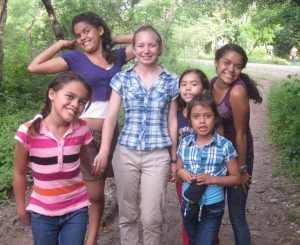I first studied ethnography last year in my “Radical Sexuality” class taught by Professor Eng-Beng Lim in the Women, Gender, and Sexuality Studies Department. We watched two movies that really stuck me with. In The Good Woman of Bangkok, Australian filmmaker Denis O’Rourke travels to Thailand to create a documentary about prostitution. He profiles the 25-year old prostitute Yaiwalak Chonchanakun, called Aoi, who is also O’Rourkes paid lover. His involvement with Aoi both provides an intimate view of his subject and, obviously, raises ethical questions of exploitation. Yet O’Rourke’s stated transactional relationship with his subject perhaps exposes the true nature of ethnography. When studying “other” individuals and cultures, it is not possible to avoid personal entanglements. The ethnographer’s presence always affects the subject. Moreover, is it possible to avoid colonial power dynamics, despite the ethnographers best intentions?
The other movie, The Couple in the Cage documents the performance artists Guillermo Gómez-Peña and Coco Fusco. They toured the world exhibiting themselves as caged American Indians from a newly discovered imaginary island. It was supposed to be satirical commentary, but many of their viewers believed the fiction and no one knew what the proper response should be. This movie showed me that no matter how thoughtfully an ethnographer approaches their work, the public can (and will!) interpret it through a colonial/racist perspective.
There are inherent problems in “studying” people, because the act of studying implies that they are the “other” and need to be “discovered.” While we (the United States) learn about former colonies through ethnography, former colonies learn about former colonizers through the media, commercial products, and culture exported to them. Ultimately, the risk of ethnography is unintentionally exploiting its subjects. The reward is the ethnographer’s new knowledge and understanding. This is not a fair exchange. Yet ethnography cannot just be rejected because of these intrinsic issues. The alternative to ethnography (at least until there is an equal power dynamic between countries) is staying home and never learning about people in developing nations. The lack of understanding of other cultures has its own enormous risks and consequences.
To try to limit the risks of ethnography, I believe potential ethnographers have to be extremely thoughtful in how they conduct their research. As we have discussed in class, we must try as much as possible to make ethnographic interviews shared exchanges (although they can never be truly equal). While our presence in Nicaragua resembles (colonial) intervention, it is also an opportunity to share our own experiences and culture not as a commercial export but on the level of personal human interaction.
Chelsey Hauge in the article “Ethnographic Entanglements: How having multiple roles enriched my research in Nicaragua” directly confronted the entanglements and dynamics inherent in ethnography. In her job in the program Amigos de las Américas, Hauge had an explicit, structured relationship with her subjects. She reflects after hosting a meeting with both Nicaraguan and American youth, “Did I shape that community meeting in important ways, highlighting particular voices from my position of power? I certainly did, though had I only been an ethnographer, my presence would have shifted the meeting as well.” Hauge recognizes that even a disengaged “researcher” influences his or her subjects. So she embraces this role and allows her entanglements with Nicaraguans to give her an intimate insight other ethnographers would not be exposed too. As long as she critically engages and reflects on her “conflicting roles as researcher, mentor, producer, friend, programmer, and confidant among others” I think this approach to ethnography is perhaps the most ethical. Hauge never pretends her ethnography is something it is not, and her intentional intervention thus permits real dialogue and shared experiences with her subjects/mentees/friends.




